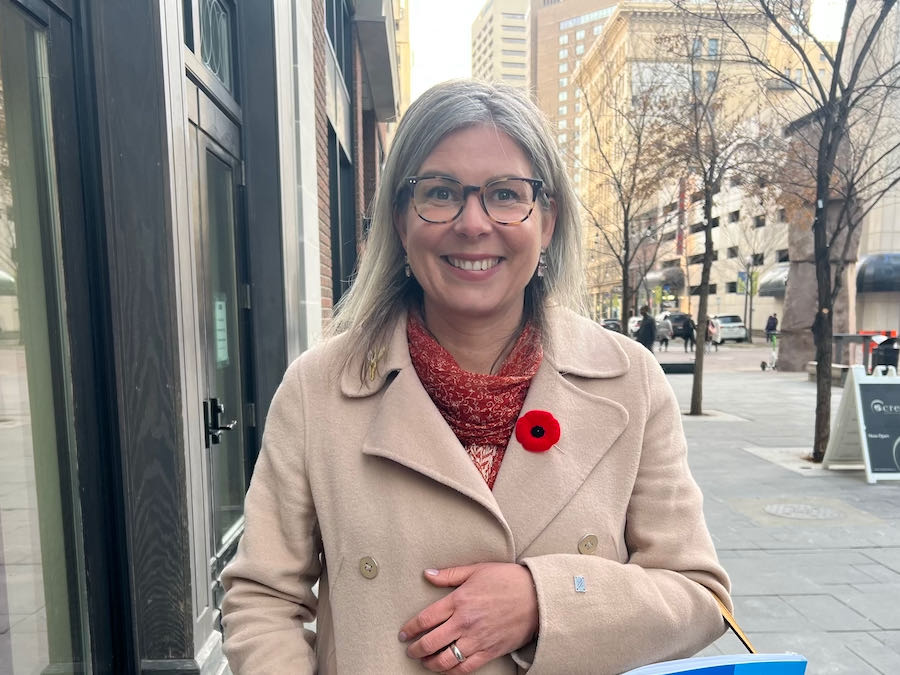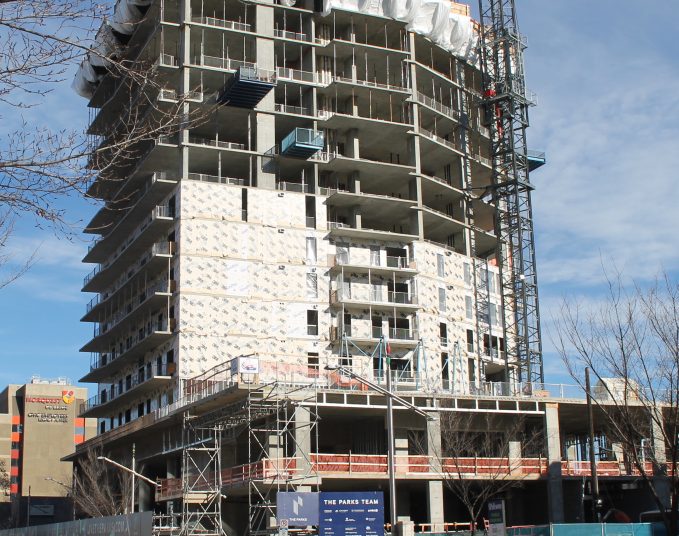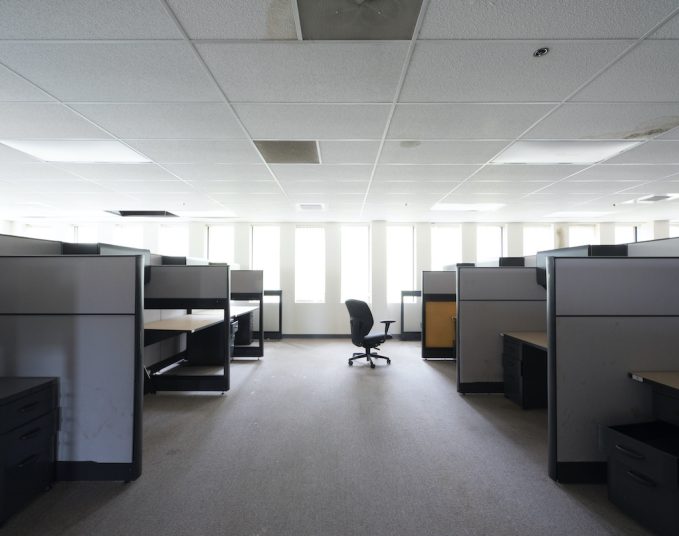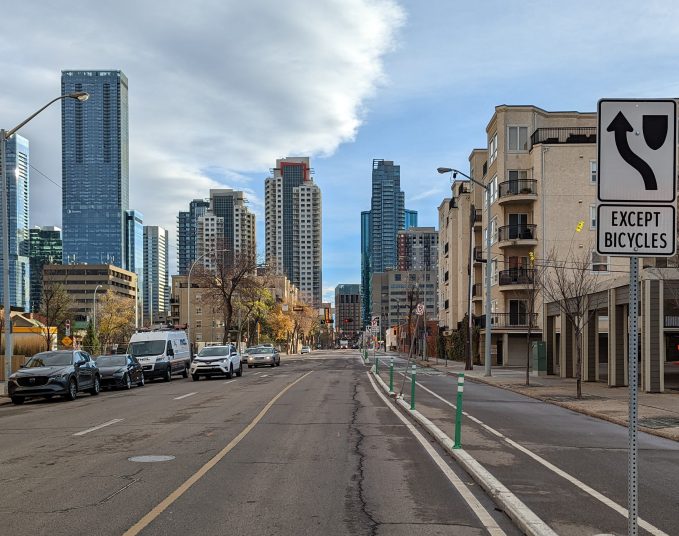If there’s anything that shows the kind of financial pickle the City of Edmonton is in, it’s the current debate over how to cull unused and unnecessary office space from the downtown core.
We’re in the midst of a perfect storm. Like many cities around the world, Edmonton is dealing with a major shift in the way we do business — the office isn’t that important anymore. Our grandkids will watch reruns of The Office (because their grandparents told them to) and wonder why Pam and Jim and Dwight aren’t just working from home.
Edmonton has a downtown commercial vacancy rate of over 20 per cent. That’s the second worst in Canada, with only Calgary ahead of us.
So, why should someone living near the Henday, who might come downtown for the odd Oilers game or maybe to eat out once or twice a year, care if the downtown offices are empty or not? Well, empty buildings plummet in value. And that means the landowners pay less taxes. Empty retail slots don’t generate tax revenue. The estimates are that for every 10 per cent in value that downtown buildings lose, taxes on commercial ratepayers in the rest of the city have to go up by around 0.8 per cent. Downtown takes a lot of our collective tax burden on its shoulders; if it falters, we all pay.
“I believe this is one of the defining problems of this council’s time,” said Anand Pye, executive director of NAIOP, Edmonton’s commercial real estate development association.
“This will erode our tax values for the entire city,” warned Kalen Anderson, the executive director of the Edmonton branch of the Urban Development Institute. “Steady tax revenue from a vibrant downtown core protects the city at large from massive shifts in tax rates.”
Some cities, including Calgary, have decided to backstop developers as they take unneeded office towers and convert them to residential properties. Calgary’s aid, which was at $75 a square foot for an office-to-residential conversion, was just put on pause because it hit the limit of how much it could spend at the moment, over $100 million.
Why do developers need government help? That’s because they say that banks are not interested in taking on all the risk for anything that involves office buildings at the moment.
The City’s Urban Planning Committee heard the pitch from the development community this week — that some sort of similar plan is needed. The Committee is made up of five members of council, but any of the councillors can speak at these meetings.
And this is where it gets messy.
Council as a whole is in a crisis. Let’s not sugarcoat it. It is dealing with a deficit of nearly $74 million. A maintenance hole of more than $450 million has to be dealt with. Taxes are already forecast to rise by over seven per cent, just for the City to keep the status quo. And, the City is staring down a serious strike threat from thousands of workers, which could close many services in the coming weeks.
And, the City has already spent heavily to improve downtown, from the building of Rogers Place and the ICE District, to tax deferral plans for residential constructions. But, no new development permits have been taken out for the downtown area since 2021.
So, because of the exceptional cash crunch, it was laid out very quickly that the City could not afford a new plan to help developers pay for conversions.
“What I am struggling with is the up-front cost,” said Mayor Amarjeet Sohi. “Money is very tight. We are already looking at a 7.03 (per cent) tax levy. And, at your request, and rightfully so, we upped the police budget. And, two thirds of the additional costs are going to our policing to improve safety downtown — and the city.”
What was on the table was a plan to take money from the Downtown Community Revitalization Levy and use that to aid office conversions. Now, the money from that CRL is supposed to go to infrastructure improvements that make downtown more liveable — and it’s clear that, when this comes to council in early 2024, there is going to be a fight. While it passed 4-1 at committee level, it will need to go to council as a whole to be approved, and it’s clear that there are several councillors — Michael Janz, Ashley Salvador and Erin Rutherford — who are opposed.
So, that’s the lay of the land at the moment — a City Council with empty pockets, a downtown at the risk of having many derelict buildings that could drag on the tax base as a whole. Administration told the councillors that Edmonton needs to remove 1.8 million to 2-3 million square feet of office space from the core “to get back to balance.”
Mike Saunders, the senior vice-president of Qualico Properties, said that the City needs “game-changing policy” in the conversion area. He said that downtown’s population needs to increase by 10,000 for us to see retailers return to the core. He warned that Calgary is ahead of Edmonton by quite a bit in this area.
“The public perception of safety, and the journey that they’re on in their recovery is significantly different and quite positive,” said Saunders. “There’s a very active office conversion program, there’s a lot of positive signals that their economy is in recovery out of COVID.”
Henry Edgar, the president of Autograph, said his company got zoning for a 780-unit project at the corner of 106th Street and 102nd Avenue, pre-COVID. That decision was spurred by the promise of new parks, bike lanes and LRT access. But the market has since dropped.
“If we were to proceed with this development today, our returns would be negative,” he said.
But downtown needs more people, so he believes there is a need for the City to help developers kick-start their projects,
“The number-one key ingredient is people,” said Edgar. “I believe that people create eyes on the street, safety in numbers. They’re the customers for struggling retail, restaurants and cafes, they create vibrancy for events and festivals.
“Without people, we simply cannot expect an easy road to recovery.”
This will continue to be a messy issue heading into 2024. Public Interest Alberta has made it clear that it will lobby against the developers’ wishes. Bradley LaFortune, the group’s executive director, said of the Halloween meeting: “I was thinking about going as a developer. But, instead of asking for candy, I thought I’d ask for 100 bucks for every square inch of my pillowcase… Now is not the time to be giving out handouts to developers.”
And it’s clear his sentiments are shared by segments of council. As mentioned earlier, the Urban Planning Committee has the power to recommend, but not enact, legislation. Only five councillors sit on it. While the committee asked administration to open up the CRL and see if there is money there, the indications are that when this comes to full council, there’s going to be a fight.
Rutherford said she opposes taking money out of the CRL, which she said would bring downtown improvements to a standstill.
“Public dollars should go to public infrastructure,” she said.
Janz said giving developers the money up front makes no sense if the city does not get any sort of equity positions in the projects. And he said the City should look at converting some of its own excess office space, first. He also noted via his X account that the City is spending $16.7 million in affordable housing, which will create 267 new units.
Salvador wondered out loud why developers say there is a need for office conversions, when council was just told weeks ago that hundreds of excess parking lots in the core could not be developed, because there was no interest in building downtown at the moment?
“I am not sure that [office to conversion support] is what I’d consider a transformational proposal,” said Salvador. She added that it’s not council’s role to mess with the market.
But Coun. Tim Cartmell, who supported the motion, said that council has interfered with the market in the past, including its plan to limit subdivisions on the south side of the city.
Meanwhile, building values downtown continue to plummet, vacancies grow, and we have a council that, financially, has its hands pretty well tied behind its back. A perfect storm, indeed.
Savvy AF. Blunt AF. Edmonton AF.




